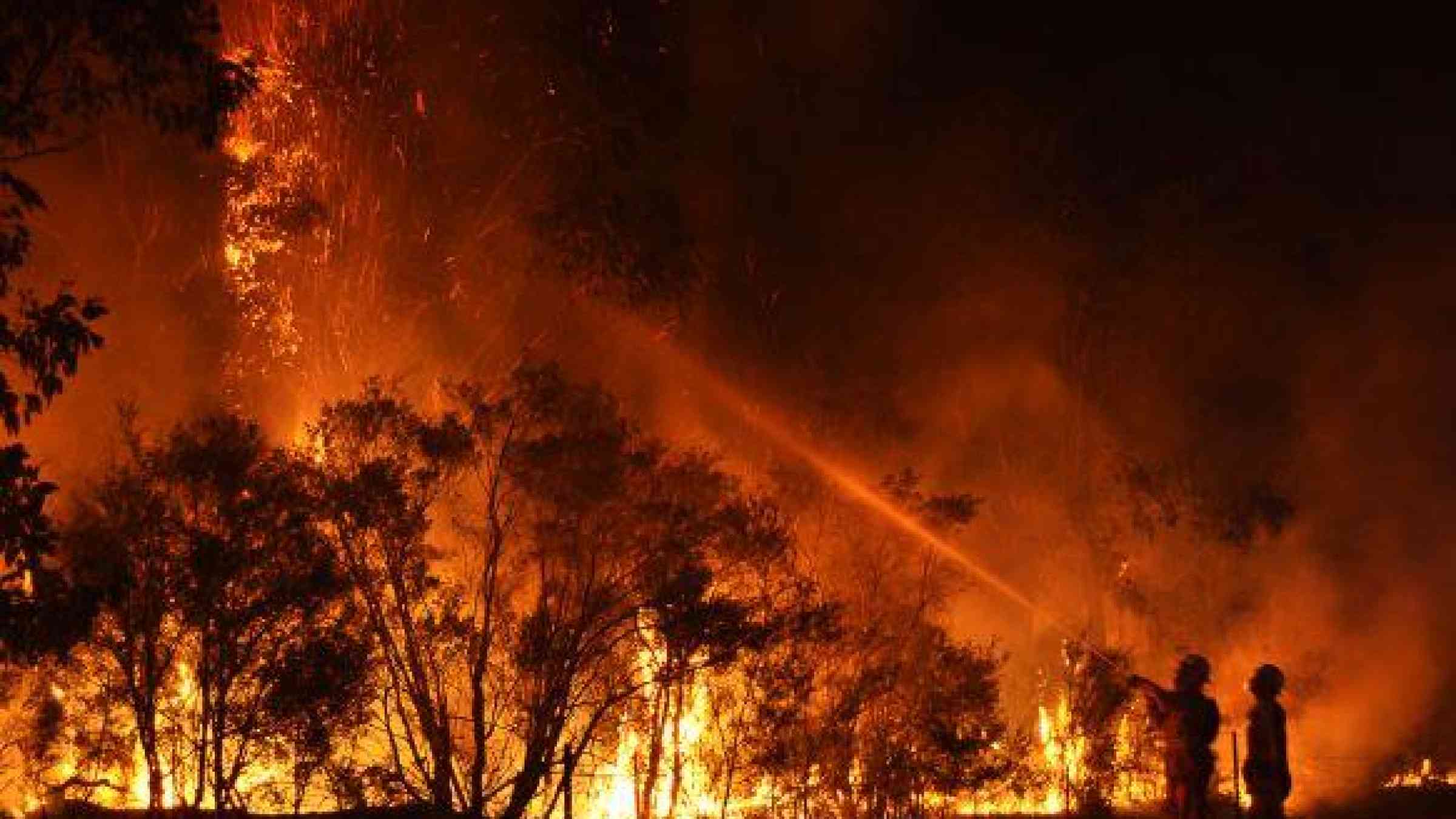Australia had more supersized bushfires creating their own storms last summer than in previous 30 years

By Calla Wahlquist
[...]
Huge thunderstorm-type clouds called pyrocumulonimbus form over fires in particularly hot, dry and dangerous conditions and are capable of generating their own winds and lightning. They were once considered “bushfire oddities” but last summer there was a “near doubling of the record of these events, in one event,” Prof David Bowman told the royal commission on Tuesday.
[...]
In some cases, he said, a fuel reduction burn could lead to increased bushfire risk.
“Inappropriate fire management could drive a system to become more combustible because, for instance, there is much more fine fuel mass such as grass,” Bowman said. “That’s why fire management is so complicated, because it’s not simply turning off switches. As you change the repertoire of fuel types, trying to change fire behaviour, there is a recursive reaction where the system will also start changing as well.”
Bowman said that change was compounded when you had both fire and drought, which could work together to fundamentally change ecosystems. He said that was already being seen with snow gum forests in the Australian alps. It’s “the vegetation equivalent of an ice sheet breaking up as the climate is becoming more fire prone and drier. The old vegetation types are not just going to slowly change and migrate, but be burned up.”
[...]
All three agreed hazard reduction burns were most effective, and most expensive, when they were targeted at protecting built assets such as homes and schools. They said some ecosystems, such as tall, wet forests, did not lend themselves to hazard reduction burns because they burned only under very dangerous conditions and therefore could not be safely managed.
[...]
“When you’ve got limited budgets and limited opportunities, then people will be brutally exposed if they do not prioritise treatments in a cost-effective way to mitigate risk to people and property,” he said.